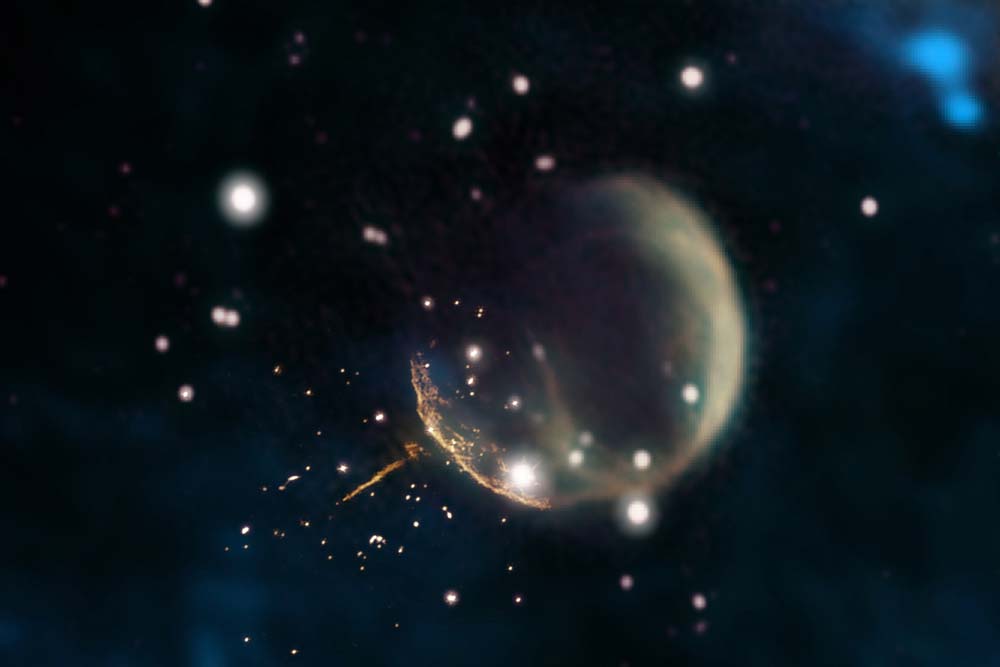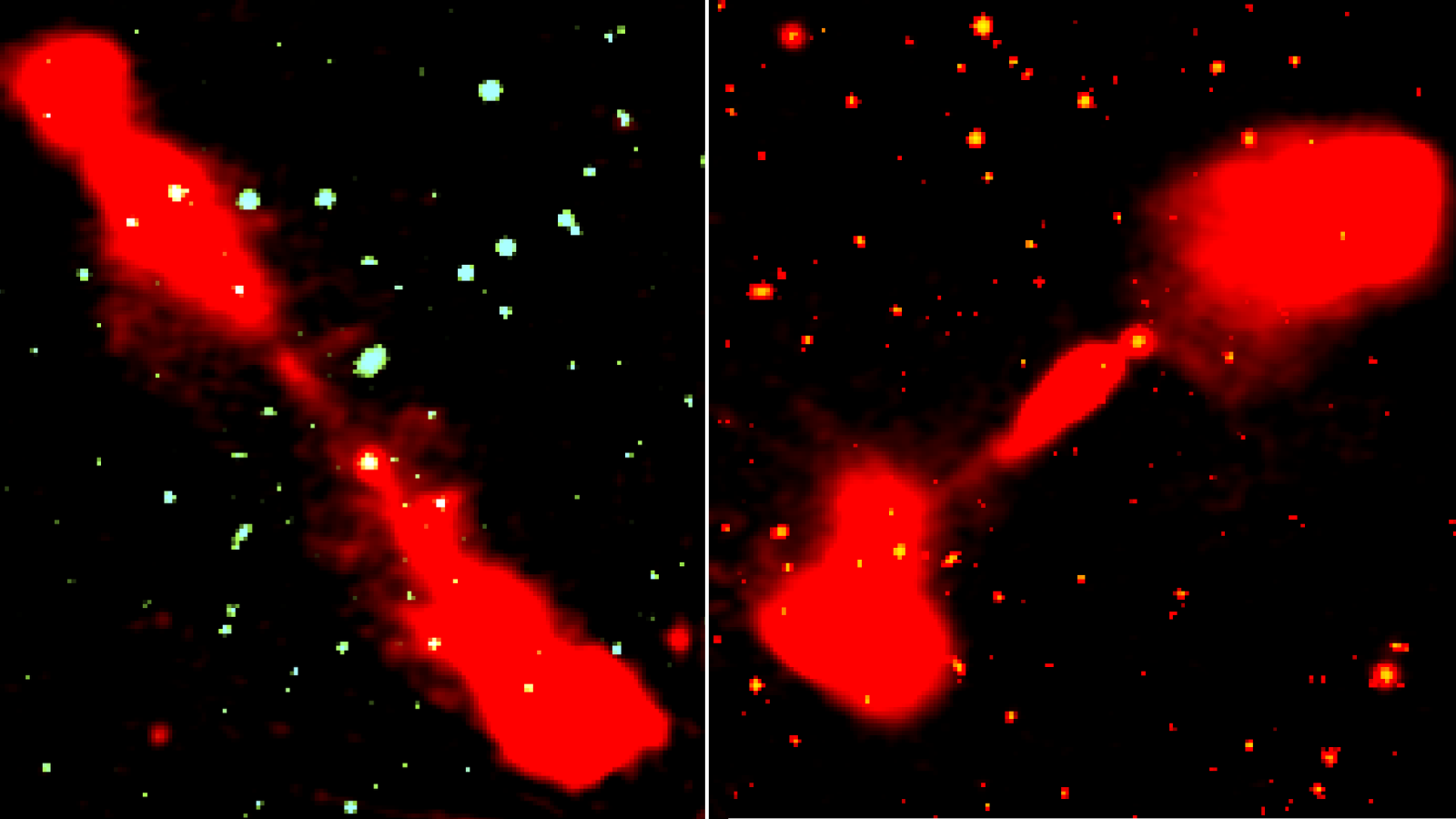Whirling 'Cannonball' Pulsar Flees Supernova Site at Epic Speed
A supernova explosion flung out a super-dense, whirling stellar core, sending it streaking across space at almost 2.5 million mph (4 million km/h) with a glowing trail 13 light-years long in its wake.
Researchers tracked the stellar core, called a pulsar, using NASA's Fermi Gamma-Ray Space Telescope and the National Science Foundation's Very Large Array (VLA) astronomical observatory. The pulsar is about 6,500 light-years from Earth and was first discovered in 2017 by a citizen science project, Einstein@Home. It is moving fast enough to travel from Earth to the moon in just 6 minutes — 5 times faster than the average pulsar moves, and faster than 99 percent of pulsar speeds previously documented by researchers. Scientists described the pulsar as a cosmic "cannonball" in a NASA statement.
"Thanks to its narrow dart-like tail and a fortuitous viewing angle, we can trace this pulsar straight back to its birthplace," Frank Schinzel, a researcher at the National Radio Astronomy Observatory in New Mexico, said in the statement. "Further study of this object will help us better understand how these explosions are able to 'kick' neutron stars to such high speed."
Related: NASA's Fermi Space Telescope Marks 10 Years of Gamma-Ray Science
Pulsar J0002+6126 was likely flung from the system after its predecessor star's supernova, eventually surpassing the expanding shell of gas and dust also released in the explosion, officials said in the statement. The object's long tail, which can be detected in radio wavelengths, comes from shockwaves as it travels through interstellar gas and dust, called the interstellar medium.
The pulsar flashes regularly, its jets of gamma-rays sweeping by Earth 8.7 times per second as it spins. The research team took advantage of its regularity to measure the object's precise speed and direction.
"The longer the data set, the more powerful the pulsar timing technique is," Matthew Kerr, a co-collaborator on the discovery and a researcher at the U.S. Naval Research Laboratory in Washington, said in the statement. "Fermi's lovely 10-year data set is essentially what made this measurement possible."
Breaking space news, the latest updates on rocket launches, skywatching events and more!
The supernova explosion that initially propelled the pulsar likely occurred about 10,000 years ago; the object has travelled 53 light-years away from the epicenter of the blast. After about 5,000 years, the pulsar shot past the shell of gas and debris, which was slowed even more by the interstellar medium. The researchers are unsure how the supernova kickstarted the pulsar's flight; one explanation, officials said in the statement, could be that a dense patch of matter formed during the star's collapse and lasted long enough to tug the stellar core toward it.
Future observations with the VLA, the NSF's Very Large Baseline Array and NASA's Chandra X-ray Observatory may shed more light on the pulsar's swift exit.
The new work was presented at an American Astronomical Society meeting in California and has been accepted for publication in The Astrophysical Journal Letters.
- This Newfound X-Ray Pulsar Is Orbiting Its Partner at Record Speed
- Captured! Radio Telescope Records a Rare 'Glitch' in a Pulsar's Pulsing Beat
- Inside a Neutron Star (Infographic)
Email Sarah Lewin at slewin@space.com or follow her @SarahExplains. Follow us on Twitter @Spacedotcom and on Facebook.

Sarah Lewin started writing for Space.com in June of 2015 as a Staff Writer and became Associate Editor in 2019 . Her work has been featured by Scientific American, IEEE Spectrum, Quanta Magazine, Wired, The Scientist, Science Friday and WGBH's Inside NOVA. Sarah has an MA from NYU's Science, Health and Environmental Reporting Program and an AB in mathematics from Brown University. When not writing, reading or thinking about space, Sarah enjoys musical theatre and mathematical papercraft. She is currently Assistant News Editor at Scientific American. You can follow her on Twitter @SarahExplains.

